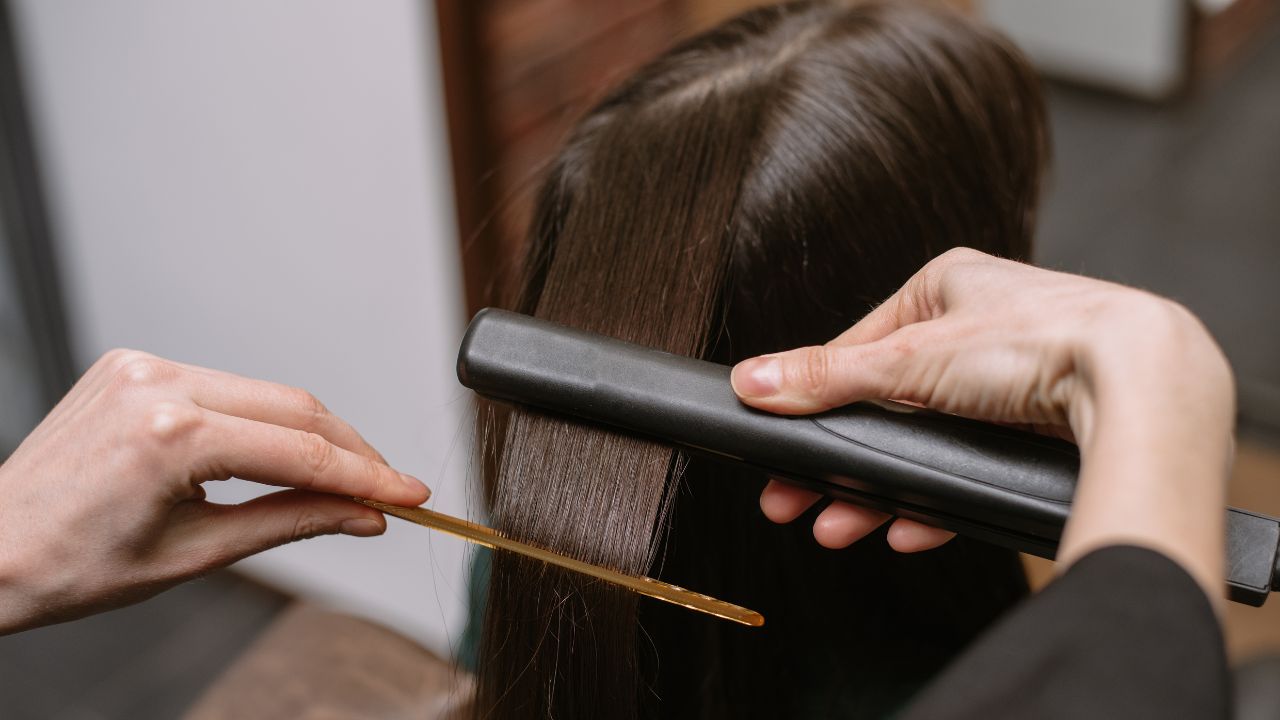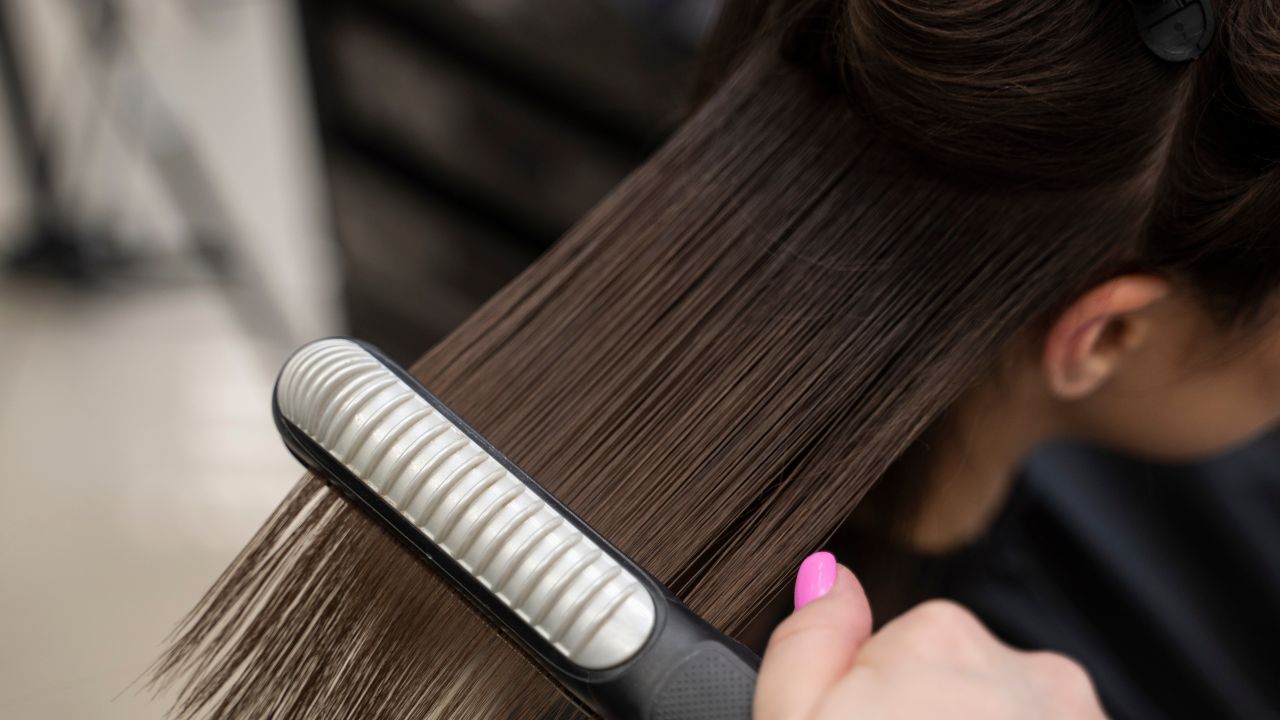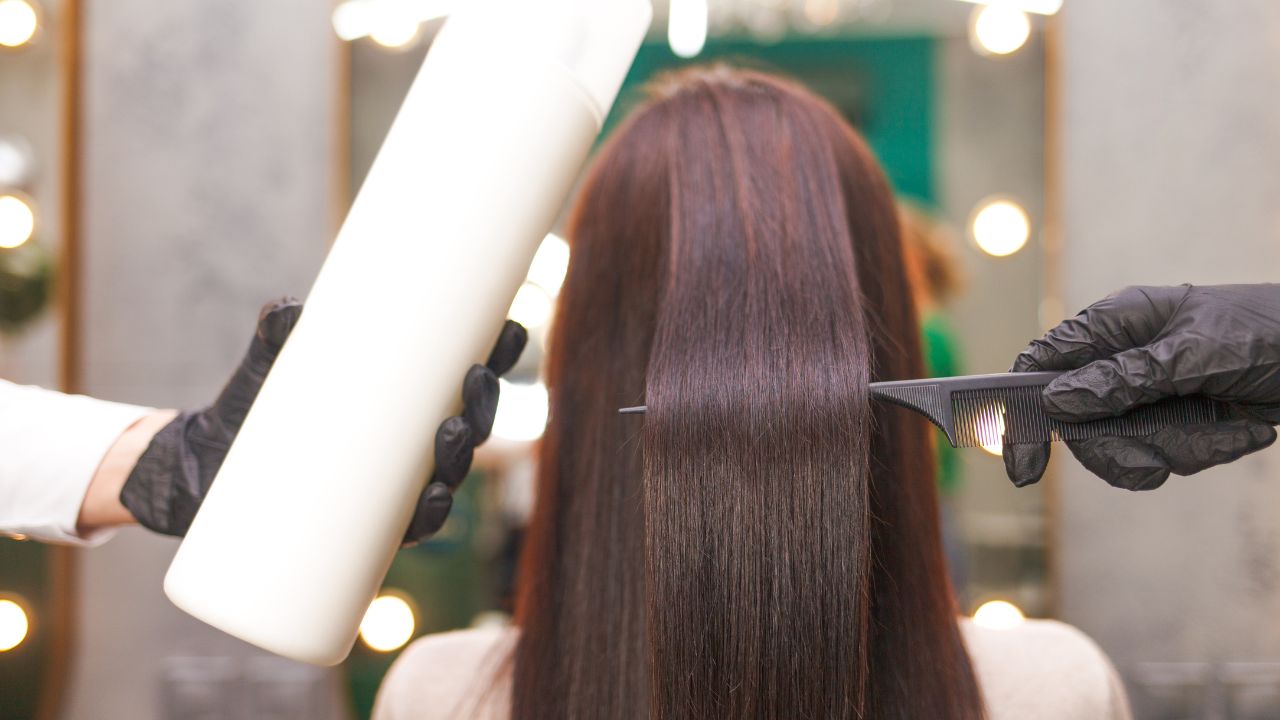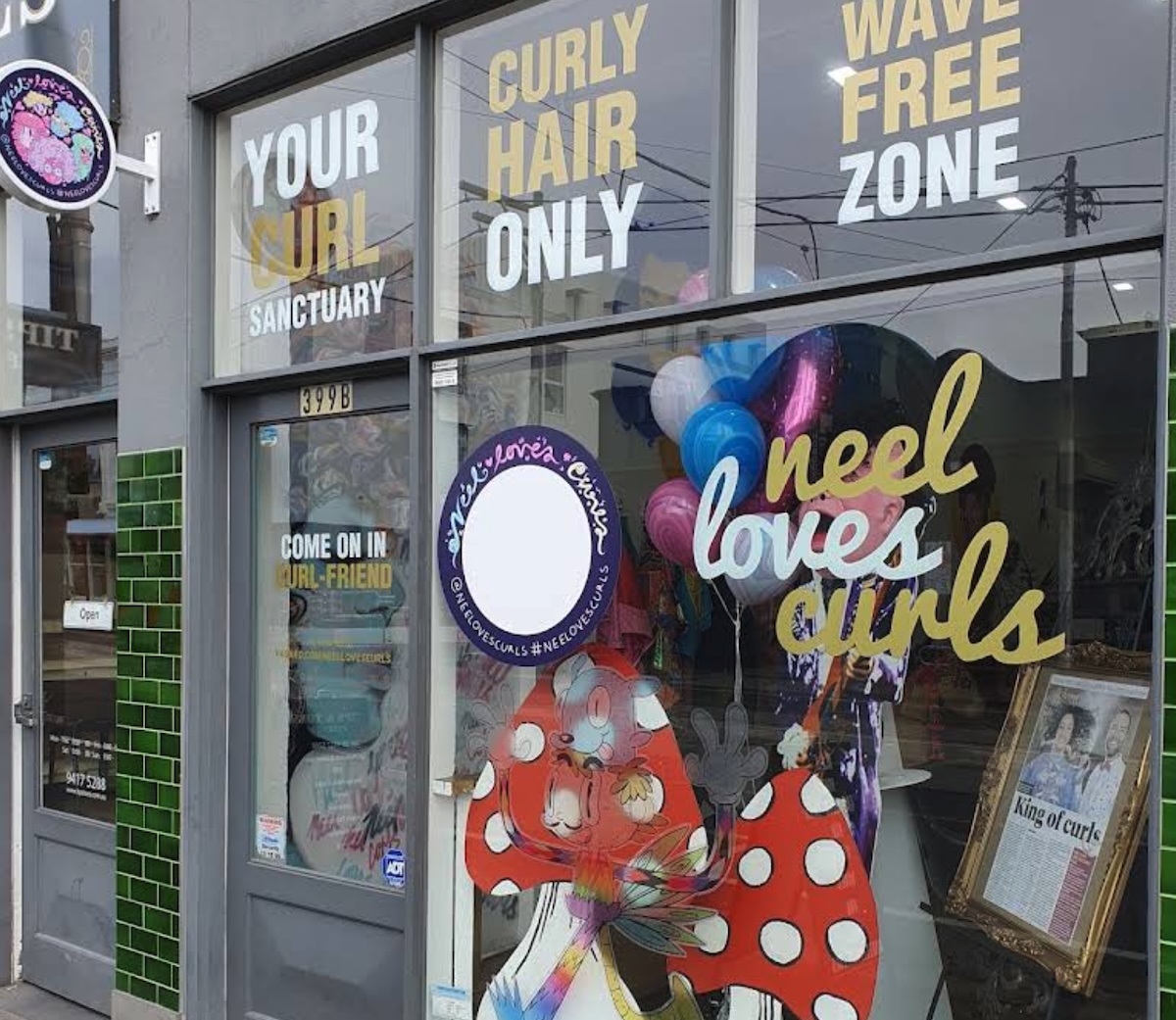Australia’s beautiful sunshine and beaches are a dream, except for your dyed hair. Intense UV rays, dry weather, saltwater swims, chlorine pools, and high heat can all wreak havoc on color-treated hair, causing fading, dryness, and damage.
Whether you’re a beachy blonde, rich brunette, fiery redhead, pastel unicorn, or rocking a balayage, you can keep your color vibrant and your strands healthy with the right care. This guide will walk you through practical tips for protecting your dyed hair from Australia’s harsh climate. From UV protection and gentle washing to deep hydration, chlorine defense, and heat-styling tricks. Let’s keep that gorgeous color looking fresh!
1. Sun & UV Protection for Color-Treated Hair
Australia’s sun is intense, and UV exposure is enemy number one for dyed hair. Ultraviolet rays break down the hair’s protective lipids and keratin proteins, dehydrating strands and stripping away color. The result? Dry, brittle hair that looks dull or brassy, with expensive salon color fading fast.
Lighter shades and bleached/blonde hair are especially vulnerable – without pigment protection, they can incur more UV damage and color change than darker hair. But no matter your hue, shielding your hair from the sun is essential.
Cover up. The easiest fix is to block sunlight physically. When you’re outdoors, wear a wide-brimmed hat, a cute scarf, or even use a UV-blocking umbrella. Not only will this save your hair color, it also protects your scalp (which is skin and can burn, too!). Even better if your hat is UPF50+, the fabric equivalent of sunscreen.
Use UV-protective hair products. Many leave-in sprays, creams and serums are formulated with UV filters to defend your hair from sun damage. Applying a UV protectant is like sunscreen for your strands, it helps prevent color fading and drying out.
For example, salons recommend products like Sachajuan “Hair In The Sun” (a styling cream with UV filters) or Aveda Sun Care Protective Hair Veil (a lightweight mist that shields hair from UV rays) to wrap the hair in an invisible screen.
You can also check out Moroccanoil Protect & Prevent Spray, which acts as a leave-in conditioner that detangles and softens while preventing color fade and brassiness and shielding hair against UV. Simply spritz a UV protectant on your hair before you step out into the sun, just as you’d apply sunscreen to your skin.
Seek shade and timing. Whenever possible, avoid direct sun during peak UV hours (10am–3pm). If you’re at the beach, sitting under an umbrella or in the shade can significantly reduce UV exposure to your hair. Little habits like these add up to keep your color from bleaching out in the sun.

2. Washing & Conditioning Dyed Hair
How you wash your colored hair can make a huge difference in how long the color lasts. Start with frequency: try not to shampoo every day. Over-washing strips your hair’s natural oils and causes dye to leach out faster. Many color pros suggest washing every other day or even 2-3 times a week if you can manage it. On “off” days, you can rinse with plain water or use a dry shampoo at the roots to keep fresh.
Cool water is key. When you do wash, use cool or lukewarm water instead of hot. Hot water opens the hair cuticle and can cause the dye molecules to rinse out, fading your color faster. Cooler water, on the other hand, helps seal the cuticle to lock in color and moisture. As a bonus, a cool rinse leaves hair shinier by smoothing the cuticle.
Choose color-safe shampoos and conditioners. Regular shampoos with harsh sulfates can strip color. Opt for sulfate-free formulas designed for color-treated hair. These gently cleanse without taking out as much pigment. Look for keywords like “color-safe” or “colour protect” on the label. Many also include extra conditioning agents or UV filters.
For example, L’Oréal Paris Elvive Colour Protect shampoo (drugstore-friendly) contains UV filters and nourishing oils to protect hue and shine, while salon brands like Pureology Hydrate Shampoo (sulfate-free and vegan) are top-rated for preserving color. Always follow with a rich conditioner focused on hydration and color protection – dyed hair needs the moisture boost. Products with ingredients like argan oil, shea butter or keratin can help keep hair soft and less prone to breakage.
Be gentle. Treat your hair gently when it’s wet (that’s when hair is most fragile). Use a wide-tooth comb or your fingers to detangle with conditioner on, rather than rough brushing. Also, blot hair with a soft towel or old T-shirt instead of vigorously rubbing; this prevents frizz and cuticle damage. The gentler you are, the less color you lose due to mechanical stress.
3. Hydration and Damage Control
Dry climate and chemical processing (like dye or bleach) both sap moisture from your hair. Many regions in Australia have low humidity, meaning the air draws moisture out of your strands, leaving them parched. Dry hair not only feels rough and brittle, but it also fades faster because porous, dehydrated hair leaches out color more quickly. The solution?
Hydrate, hydrate, hydrate! Keeping your colored hair well-moisturized will maintain its shine, strength, and color saturation.
First, make a weekly deep-conditioning mask your best friend. Using a nourishing hair mask once a week is vital for replenishing lost moisture and repairing damage in color-treated hair. Look for masks rich in natural oils (argan, coconut, jojoba), vitamins, and proteins to strengthen your strands.
For example, use Olaplex Hair Perfector No.3 as a weekly treatment for dyed or bleached hair. Olaplex No.3 is a bond-repair formula that rebuilds broken protein bonds in the hair, making it stronger and healthier after the wear and tear of coloring.
Applying a mask or treatment like this once a week can keep your hair strong enough to hold color longer and reduce breakage. Other great mask options include Moroccanoil Intense Hydrating Mask (to drench hair in moisture) or the Wella Professionals Ultimate Repair Mask (formulated especially for dry, colored hair).
In between mask days, use a good leave-in conditioner or hair oil after washing. These leave-ins lock in moisture and add an extra layer of protection. If your hair is very dry or damaged (think bleached blondes or high-lift balayage pieces), a few drops of hair oil on the ends daily can do wonders to prevent splits and keep those ends from looking frazzled.
Lightweight oils like argan oil, jojoba or even a serum like Olaplex No.7 Bonding Oil will nourish hair and tame frizz without greasiness. As a bonus, many hair oils also provide UV and heat protection. For instance, Olaplex No.7 and Moroccanoil’s Treatment oil both help shield the hair when styling. Apply a bit of oil to damp hair mid-lengths to ends, or to dry hair for extra shine and to calm flyaways.
Don’t forget trims. It may sound counter-intuitive when you’re trying to grow your hair long, but regular trims (every 6-8 weeks) are important. Removing the dry, split ends prevents breakage from traveling up the hair shaft. Your hair will look healthier and thicker. Even just a tiny “dusting” trim makes a difference in maintaining colored hair, since fried ends never hold color well and tend to fade faster.

4. Minimizing Color Fading
Nothing is more frustrating than watching your vibrant dye job fade away too soon. While the above tips (cool water, gentle washing, UV and moisture protection) all help slow fading, here are some extra tricks to keep your color bright.
Wait before the first wash. After getting your hair colored, wait at least 48 hours (2 days) before shampooing it. This gives the cuticle layer time to fully close and lock in the dye. If you wash too soon, you risk rinsing out the color before it sets, especially for semi-permanent vivid colors or reds which are notorious for washing out quickly
Use color-refreshing products. Depending on your hair color, you can fight fade with pigmented shampoos, conditioners or rinses. For blondes fighting brassiness, use a purple shampoo or mask once a week to neutralize yellow tones (for example, a violet toning mask like Kérastase Blond Absolu or a budget pick like GROW Brighter Blonder Shampoo which “busts brassiness” while hydrating).
Brunettes can use blue-tinted products (often labeled “anti-orange” or “brass off”) to keep brown hair rich and neutral. Redheads and vivid color lovers might consider depositing conditioners in their color (like a red shampoo/conditioner or color conditioners by brands like Overtone) to refresh pigment with each use.
After lots of sun or swimming, using a color treatment toner can revive your shade. For example, O&M CLEAN.tone Treatment can replenish cool tones and moisture to counteract fade or dullness from the elements.
Avoid chemical stress. Limit other chemical treatments (like chemical straightening or perms) when your main goal is preserving color. Also be cautious with dandruff shampoos or harsh products not meant for color-treated hair, as they can strip color. If you need to treat scalp issues, look for color-safe versions of those treatments.
Shower filter (if needed). In some places, hard water (water with high mineral content) can cause color to fade or discolor (blonde hair turning a bit rusty or brassy due to minerals). If you live in a hard-water area, consider using a shower filter or a chelating (mineral-removing) shampoo occasionally. This removes mineral buildup that can make hair look dull. Just be sure to condition deeply after a chelating shampoo, as it can be drying.
5. Protection from Chlorine and Saltwater
Aussie summers often mean dips in the pool or ocean. Unfortunately, chlorine and saltwater are notoriously tough on dyed hair. Chlorine is essentially bleach. It can strip oils and color, and even distort your hair’s shade. Blondes may notice an icky green tinge or extra brassiness, and vivid colors can fade or turn weird hues).
Saltwater from the ocean, while more natural, is very drying: the salt lifts moisture from your hair and can leave it rough and tangled, causing color to look dull. But you don’t have to avoid the water entirely; just take a few precautions.
Pre-soak with fresh water. Before you jump in the pool or sea, wet your hair thoroughly with clean water (tap or shower water). Hair can only absorb so much water, so if it’s saturated with fresh water, it will soak up less chlorinated or salt water. Most beaches and pools have showers – make it a habit to rinse your hair before swimming. This simple step is incredibly effective (and costs nothing!).
Apply a leave-in conditioner or oil. On top of wetting your hair, comb a leave-in conditioner through it before swimming. The conditioner creates a barrier on the hair shaft, further preventing absorption of salt and chemicals. Plus, it keeps your hair cuticle smoother so it won’t tangle as much in the water. Look for a leave-in with moisturizing ingredients and ideally UV protection too. That way you guard against sun damage while you swim.
If you don’t have a leave-in on hand, even coating your hair with regular conditioner or a light hair oil (like coconut oil or argan oil) before swimming helps – the oil repels water and keeps chemicals from penetrating the hair.
Wear a swim cap (or at least tie up your hair). If you’re doing laps in a chlorinated pool regularly or surfing every morning, a swim cap is a smart investment. It’s not the most fashionable, but it dramatically reduces exposure of your hair to damaging water. For casual beach lounging, you might not need a full cap, but at least tie your hair up in a topknot or braid so that less of it drags in the water. Keeping your head mostly above water or hair high up will minimize soak time. Every little bit helps
Rinse and shampoo immediately after swimming: Don’t let salt or chlorine dry into your hair for hours. As soon as you’re done swimming, rinse your hair thoroughly with fresh water again. Later that day, shampoo your hair to cleanse out the chlorine/salt – preferably with a gentle clarifying shampoo that’s safe for color.
Chlorine and salt can continue to leach moisture from your hair even after you’re out of the water, so you want to wash them out. Experts suggest using a clarifying shampoo about once a week during swim season to remove buildup, without stripping your hair’s natural oils or color. One recommended product is Sebastian Professional “Reset” Shampoo, it gives a deep cleanse to get rid of chlorine residue but leaves hair feeling light and not overly dry. Always follow up with a rich conditioner or mask after clarifying to rehydrate your hair.
By pre-treating before swimming and cleaning up right after, you can enjoy the beach or pool and keep your hair color intact. In fact, pro colorists say that taking these steps means you can be a blonde who surfs or a redhead who loves pool parties – you just have to be “extra vigilant” with hair care, but it’s absolutely doable!

6. Hair Care Tips Based On Your Hair Color
All dyed hair benefits from the above practices, but different colors do have unique challenges. Here are a few extra tips for specific hair colors and dye jobs:
Blondes & Balayage. Blonde hair (especially if bleached) is prone to dryness, breakage, and brassiness. UV exposure and chlorine are the biggest threats, they can turn cool blondes yellow or even greenish. Invest in a purple toning shampoo or mask to use weekly and keep brass at bay.
Blonde balayage ends need extra moisture since they’re typically lightened. Apply hair oil or mask just on the ends often. And never skip that swim prep routine; blondes who love the pool should always pre-soak and use leave-in to avoid the dreaded green tinge! Regular Olaplex or bond treatments are practically a must for bleached blondes to keep hair strong.
Brunettes. Dark hair colors don’t lighten as dramatically in the sun, but you can still get fading or a reddish/brassy tone from UV rays breaking down the color. Many brunettes notice their rich brown turning auburn or orange-ish over time – that’s brassiness. Using a blue-tinted shampoo or conditioner occasionally can help keep brunette tones cool. Also, just because your hair is dark doesn’t mean you should skip UV protection – it will keep your brown glossy and prevent that dry, burnt look. If you have a lighter balayage in your brunette hair, care for it like the blonde tips advice above.
Redheads. Red dye fades the fastest of all colors, this is a well-known fact among stylists. Red pigment molecules are larger and don’t bind as well to the hair, so they slip out with each wash more easily. Plus, sun and water will dull a red in no time.
To keep reds vibrant, be extremely gentle: shampoo only 1-2 times a week if you can, always with cool water. Load up on UV protectant because red tones can literally bleach out in the sun within hours if you’re not careful. Using a color-depositing conditioner in a red/copper shade once a week can refresh your hue (even something like mixing a bit of semi-permanent dye into your conditioner can help between salon visits). In salon, schedule glazes or toner refreshes between full dyes to boost the red. And moisturizing is key – shiny, healthy hair reflects color better, making your red look more vivid.
Pastels & Vivid Fashion Colors. Pastel pinks, blues, purples, neon greens. These fun colors are usually semi-permanent and very prone to quick fading. They often start with a bleached base, so you have the same concerns as blondes (dryness, damage) plus the color’s short life span.
Follow all the sun, chlorine, and heat precautions religiously: UV and chlorine can alter fashion colors in unpredictable ways (e.g., chlorine might turn pastel pink into an odd orange). Wash hair as seldom as possible, every extra wash will noticeably fade a pastel.
When you do wash, you can mix a bit of your dye into your conditioner to keep depositing a little color. Many people with vivids use sulfate-free cleansing conditioners or color-specific shampoos (some brands make shampoos in colors like purple, blue, etc., to top up your shade). Essentially, treat your hair like delicate fabric, cold water, gentle care, avoid the elements and you’ll extend the life of that unicorn hue. Also, wearing a hat in the sun isn’t just for blondes; it can prevent your vibrant blue from turning into a washed-out greenish tone.
In short, each color has its watch-outs: Blondes watch for chlorine and brass, brunettes mind UV fade and warmth, reds baby that color to slow its inevitable fade, and pastels/vivids pamper like crazy and expect to refresh color often. With these nuances in mind, you can tailor the general advice to your specific look.

Conclusion
Remember that consistency is key. Using a UV spray only once or deep conditioning just occasionally won’t have the same effect as building these into your regular routine.
By following the tips above and pampering your colored hair a little extra, you can absolutely enjoy the Australian climate and keep your dyed mane looking salon-fresh. With sun-safe, well-moisturized, gently cared-for locks, your color will stay more vibrant, your hair will feel healthier, and you’ll get more compliments on that gorgeous hue long after you’ve left the salon chair. Enjoy your vibrant hair and the sunny weather!







